Finally, it was time to make our first SCUBA dive of 2010. We started the summer season by having to replace the manifolds and risers on the two inboard engines on our boat. The engines are only five years old and the manufacturer, Mercruiser, decided in their wisdom to use aluminum in the manifolds and risers. The only wisdom in using aluminum in engines that would be used in salt water was their uncanny ability to make things last until the engines were out of warranty. As much as I love boating, there are times when it really feels like I am throwing money into a hole in the ocean. Nevertheless, the boat is running and running quite well. The engines have never sounded or felt
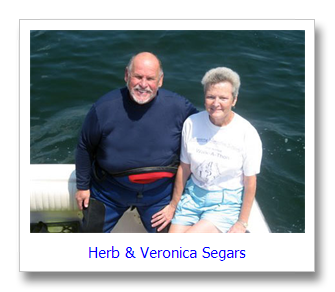
better. That was a little comfort that came with the repair bill.
The marine weather for Saturday was very encouraging – winds out of the southwest at 5-10 knots with 2 to 3 foot seas. The higher sea state was going to be in the afternoon when the wind was supposed to pick up to 10-15 knots with gusts to 20. My dive buddy, Beth Dalzell, her husband, Wes, and Veronica and I decided that we would leave the dock at 7:00am so that we could get our diving in before the wind picked up.
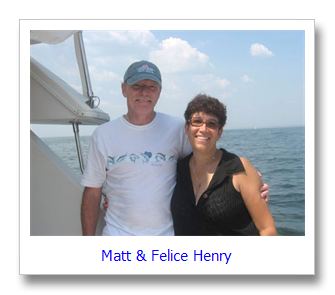
At the last minute, Veronica’s brother, Matt Henry and his wife Felice decided to join us. Matt loves fishing and Felice loves to lay on the bow of the boat and soak up the sun. Matt also loves to take photos. He has become an accomplished photographer and all the topside photos here are his except for the one of Matt and Felice. That was Veronica’s work.
We left Manasquan Inlet to find a really calm ocean. We decided to go to the Sea Girt Artificial Reef for a number of reasons – first of which it was Beth’s and my first dive of the season. Other reasons included me having a new dive computer and a new port on my underwater housing. We had a modified marker buoy and a new dive flag pole. Lastly, Beth and Wes had to get home early to attend a graduation party.
During summer weekends, the hardest thing to do is to find a spot to dive on, especially on the artificial reefs. We thought that we would try the Cranford Ferry first. It is a large site and it would give Matt a chance to fish while we dove. As we got closer to the Sea Girt Reef, we could see boats everywhere. We were just going to have to get lucky and find an open spot. A dive boat was already anchored in at the Cranford so I went to the GPS to look for close spots. Beth and I had not been on the Rockland County in a long time so we decided to go there. I have forgotten what the Rockland County was or how big it was. As luck would have it, there was no one there. We anchored in and got all our gear together and in we went.The surface visibility wasn’t real great. It looked to be about ten feet. Beth and I headed down the anchor line and when we got to the top of the Rockland County at around 60’, the visibility was about 15’. The bottom temperature was a chilly 52°F. I got my strobes positioned and turned on my camera and went exploring. The Rockland County is a 105’ long pusher-type tugboat with a 24’ beam. She was built in Wilmington, Delaware in 1960 and was sunk on February 14, 1986 and was sponsored by the Spentonbush Red Star Company. At the bow of the ship, she has two large “knees” which are used to push barges rather than pull them. I spent a lot of time at deck level circling the tug and taking pictures. Beth had hoped to get some mussels but the ones that she found were pretty small. She spent some time in the sand around the tug and saw a lot of the usual fish species like blackfish (tautog), black sea bass and bergalls (cunner). She also saw little skates and sea robins whizzing around the bottom looking for food.
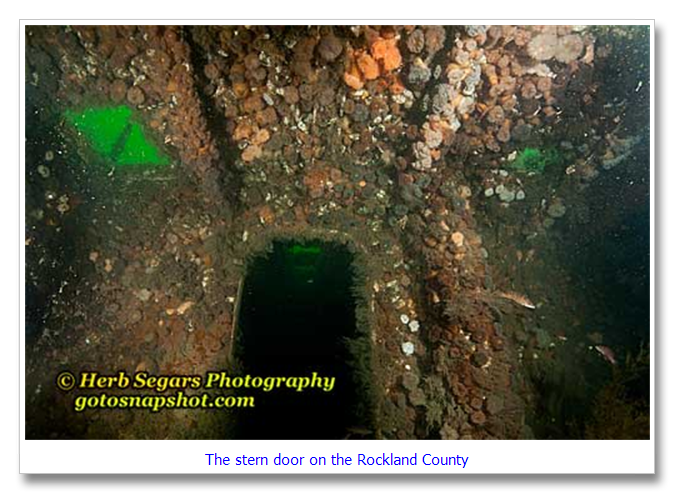
This was my first dive using a new port that I had purchased for my housing. It is a 100mm port for the Tokina 10-17 fish eye zoom lens. In the past, I have not been a big fan of fish eye lenses because I don’t really like the bowed effect of the photos. This is really evident in shipwreck photos as the fisheye lens distorts straight lines to make them look bowed. When underwater photographers are shooting coral reef photos, there are no straight lines so the photos do not look as distorted. I decided to give the Tokina lens a try again after reading many rave reviews about it on underwater photography message boards. The other thing that interested me about this lens/port combination is that the Zen 100mm port is very small and it should make it easier to light small subjects close the the lens. It would have been much easier to test this lens in bright water with good visibility but that is something that I don’t find often in New Jersey.
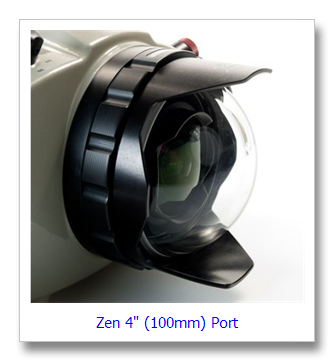
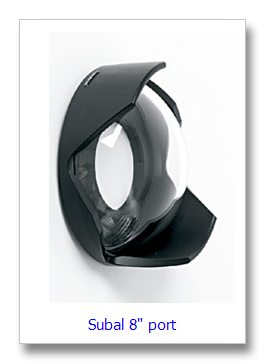
The Zen 4” port on the left is half the diameter of the 8” Subal port on the right. One of the biggest problems when using a fish eye lens in New Jersey is getting the strobes far enough behind the camera to keep the brightness of the flash from the strobe from showing up in the corners of the picture. I spent both dives trying out different angles and different subject placement.
To make things easier when using a fish eye lens, Photoshop CS5 has a lens correction feature in Adobe Camera Raw 5. Unfortunately, the Tokina 10-17mm lens is not listed in their choice of lenses. I decided to try out other lens correction factors and see if I could find one that I liked. I felt that the Canon 16mm lens correction gave me a look that I liked.
I tried some close up wide angle shots using frilled anemones in the foreground and the tug in the background.
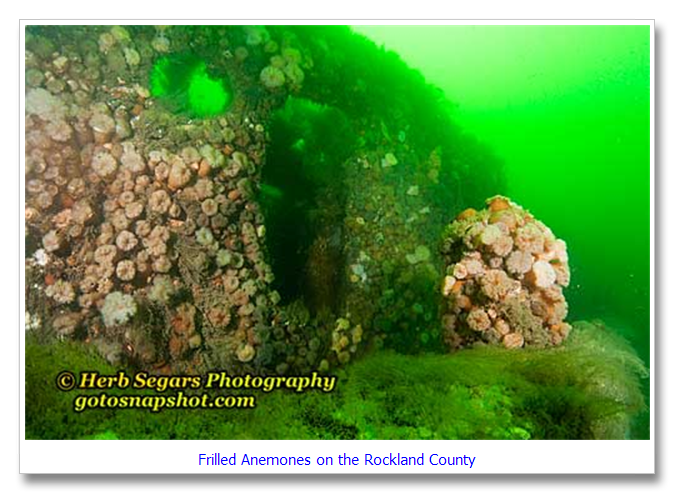
I like the effect but I am going to have to spend some time moving my strobes around to find the best lighting angles. I used an ISO setting of 400 for the photos and shutter speeds that varied from 1/5th of a second to 1/30th of a second. The key for me in making acceptable wide angle underwater images in New Jersey is to try and match the available light exposure for the shot and then use the strobes to provide color and to lighten darker areas.
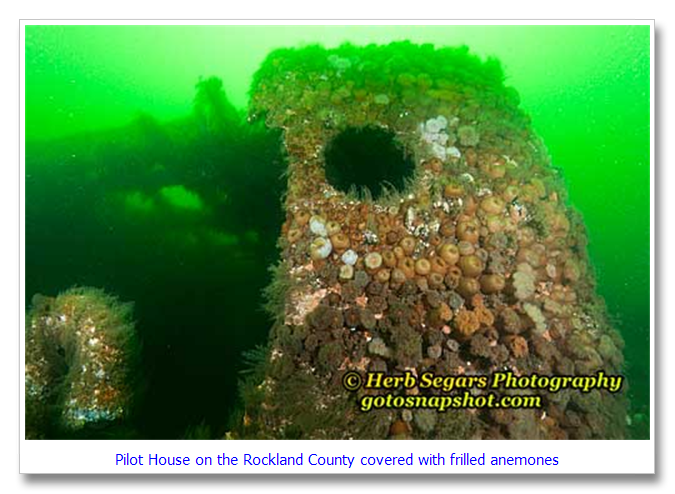
While Beth and I were diving, Matt was fishing. Since the Rockland County is only 105’ long, Matt was usually fishing in the sand behind the tug. He caught a lot of skates and one small fluke. No other game fish came on board. Matt didn’t mind because it was beautifully calm day on the ocean and he was doing something that he loves.
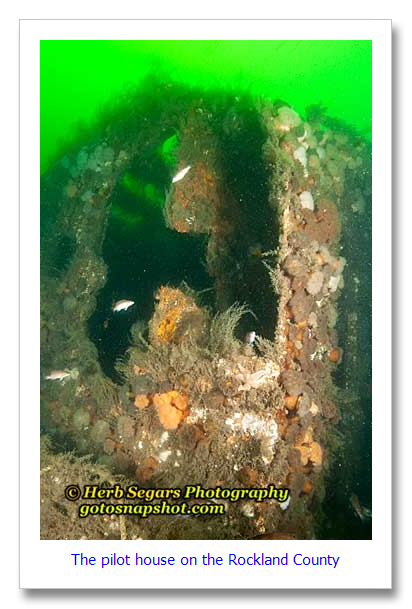
After our first dive, Veronica and Wes told us how lucky we were to get onto this spot. While we were down. numerous other boats came around and were hoping to get onto our spot. We briefly talked about changing sites between dives but we came to the consensus that we might not get onto another spot with all the boats on the reef.
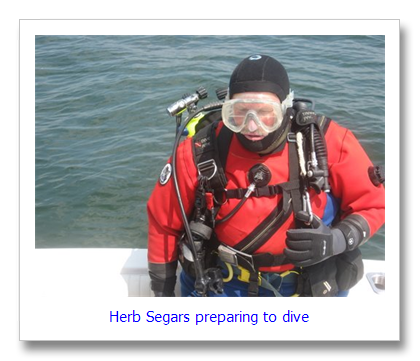
Our typical sit time between dives is one and a half hours. I set up my gear and found that I only had 2000 psi of air in my tank instead of the usual 3000 psi. It meant that my second dive was going to be shorter than my first. My first lasted 40 minutes and I estimated that I would do about 25 minutes on my second. As it turned out, it was a 27 minute dive.
I did much of the same type of photography on the second dive as I did on the first. I did try to spend more time matching available light and moving my strobes around to try and get things lit correctly and I went inside a large opening in the pilot house and shot photos of the overhead where much of the roof has deteriorated.
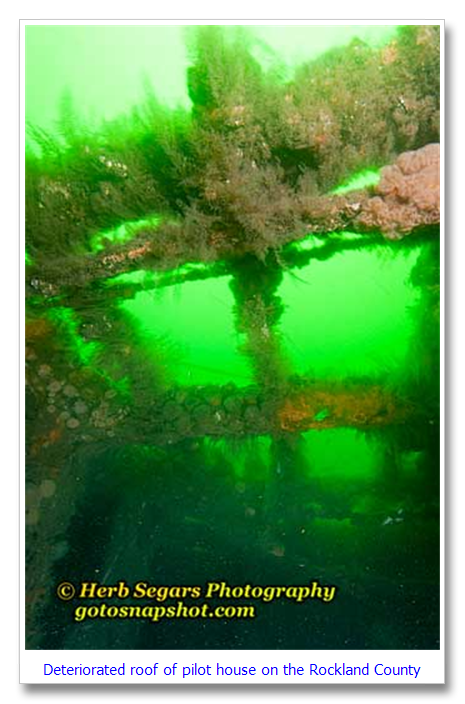
I briefly went down into the sand but there weren’t many subjects for a fish eye lens in the sand. Matt spent more time fishing while we were down and continued to catch skates.
Before we knew it, it was time to weigh anchor and head for home. We were happy because everything worked great. There were the little disappointments like the our dry suits shrinking a little over the winter but overall we had a great day. We cruised in at 15 knots and hit Manasquan Inlet right behind the charter dive boat, Gypsy Blood, bringing a large group of divers back to the docks in Brielle, NJ.
If you want to see more photos of the Rockland County, please click here or visit my Photo Gallery and look under Artificial Reefs – New Jersey.
© 2010, Herb Segars. All rights reserved.


Herb,Ronnie
Thanks again for another Great Day on the Ocean! Its always an adventure when we go out with you guys and this trip was just what we needed some time to relax and just enjoy being with people we love.
Dear Herb and Ronnie,
I couldn’t think of better place to spend our Anniversary Weekend. As always, we had a blast and, of course, I enjoyed spending the day on the bow soaking up the sun. Love you guys
Felice
thanks for the pics of the tug-rockland county, as a child my friend and I used to ride on it on the hudson river, the captain named clark, used to let us aboard and take us for rides, i willnever forget that. thanks again, jimmy
Dear Herb and Ronnie,
I found your website while researching some tugs my father worked on. The Rockland County was one of them that he engineered in the 60’s. Not only did he engineer the tug but I as a child was on board many times to steer. Still was one of the youngest to steer tugs in the 6o’s. Just wanted to make you smile..